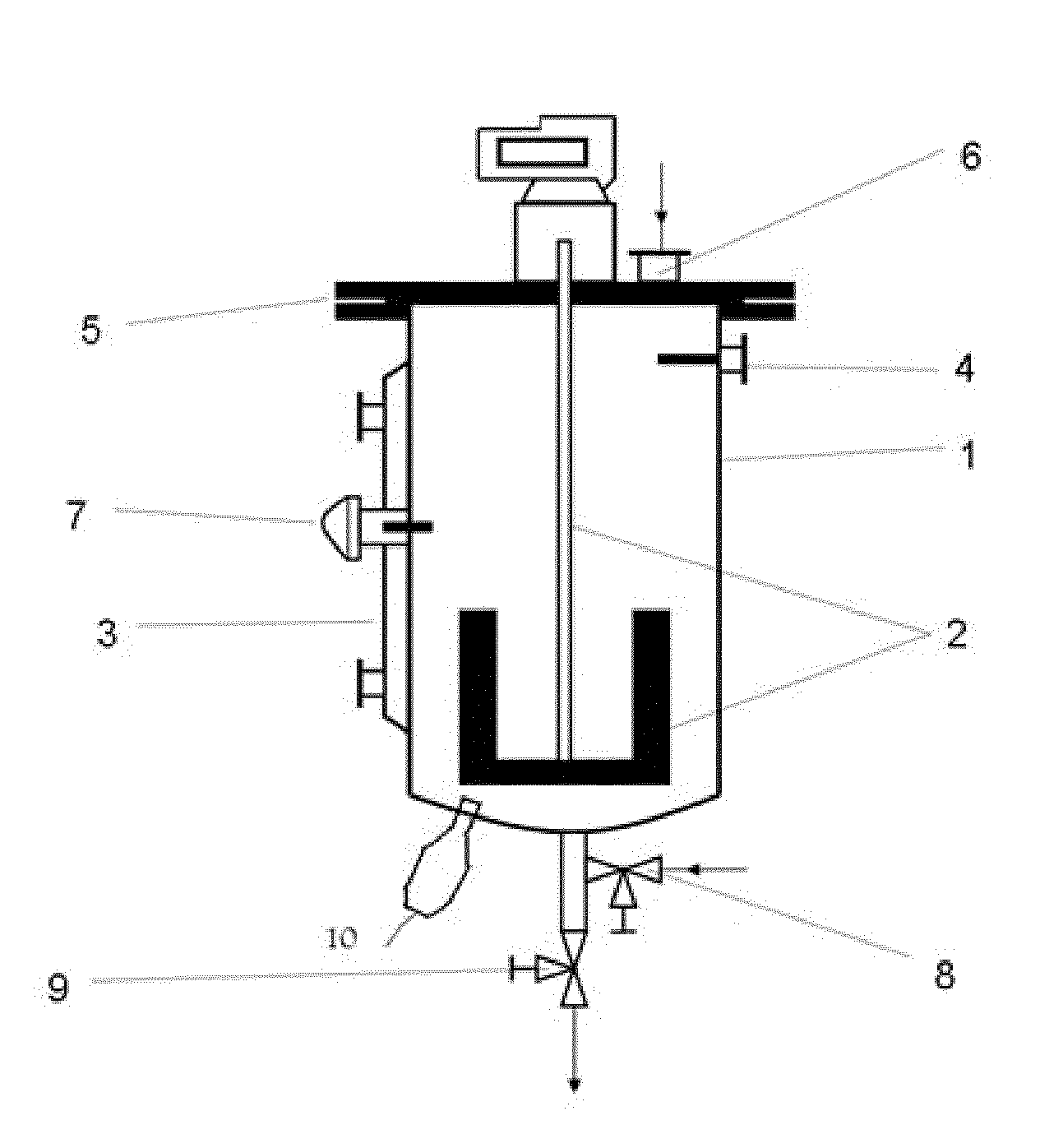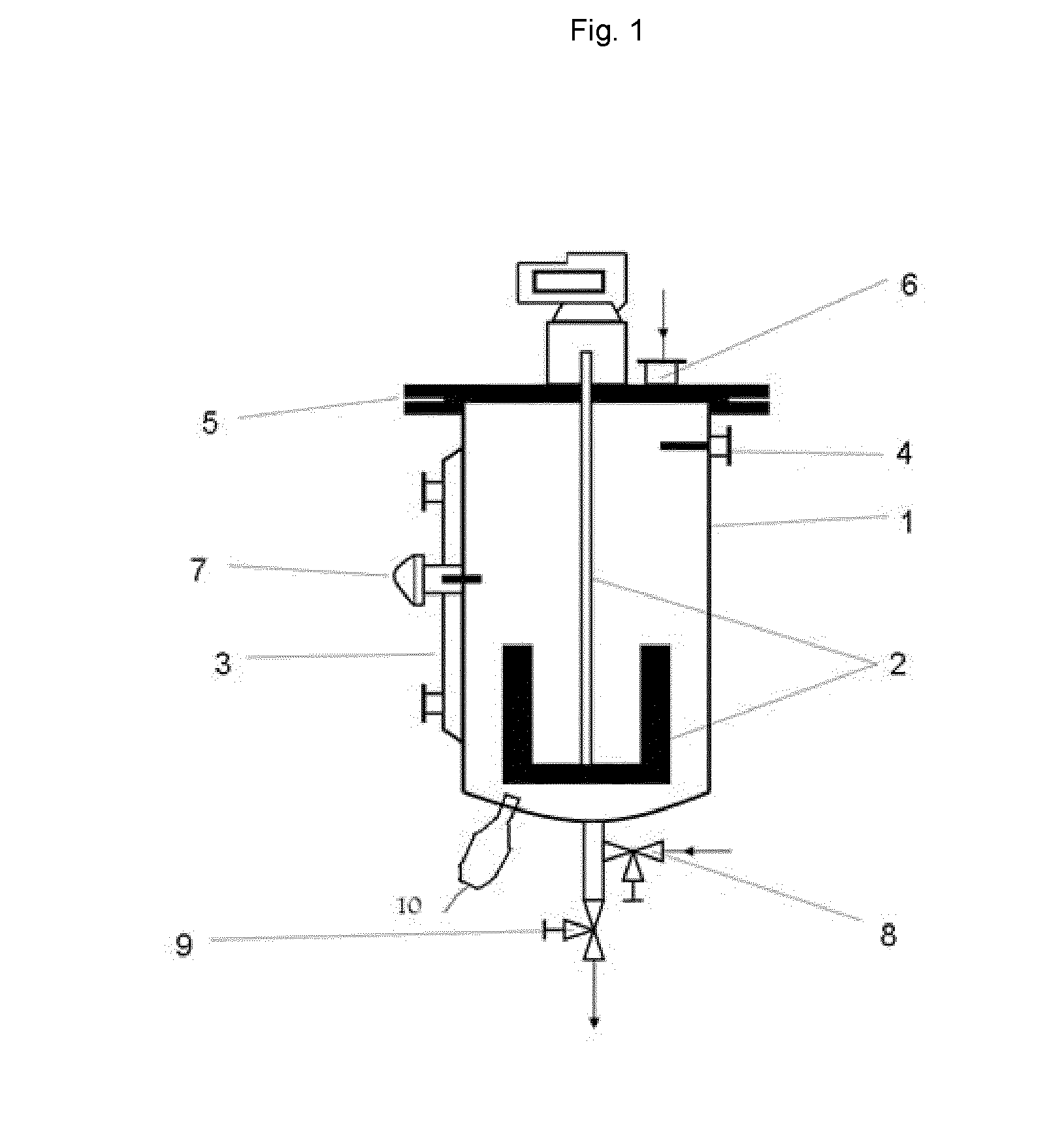Preparation of seasoning products
a technology of seasoning products and products, applied in food preparation, biomass after-treatment, specific use bioreactors/fermenters, etc., can solve the problems of reducing the production efficiency of beneficial enzymes. , to achieve the effect of reducing the loss of volatile flavour components
- Summary
- Abstract
- Description
- Claims
- Application Information
AI Technical Summary
Benefits of technology
Problems solved by technology
Method used
Image
Examples
example 1
Preparation of Concentrated Soup Base
[0058]Structured wheat gluten (6 kg) was introduced into a reaction tank and was mixed. Steam at 100° C. was then introduced into the reaction tank until the moisture content of the gluten reached 40% w / w. The mixture and the reaction tank together were pasteurised for 10 min using the steam maintained at a temperature of 100° C. Aspergillus oryzae starter powder (0.03% w / w) was introduced into the reaction tank, and the mixture was fermented under aerobic and solid-state fermentation conditions at a temperature of 30° C. for 40 h while stirring at 5 rpm using conditioned air (100% RH, 30° C.). The solid mixture was milled to a particle size of about 0.2 to 0.9 mm in readiness for hydrolysis. Water (60% w / w) was then added into the reaction tank to hydrolyze the mixture at a temperature of 55° C. and a stirring rate of 45 rpm for 36 h. A thermal reaction was then initiated by adding xylose, salt and palm oil into the reaction tank. The reaction t...
example 3
Preparation of Concentrated Pork Bouillon
[0062]Sugar (3 kg) and minced pork (4 kg) were introduced into a reaction tank and were mixed. Steam at 100° C. was then introduced into the reaction tank until the moisture content of the mixture reached 30% w / w. The mixture and the reaction tank together were pasteurised for 30 min using the steam maintained at a temperature of 127° C. Lactobacillus sp. (0.04% w / w) with proteolytic activity was added into the reaction tank, and the mixture was fermented under anaerobic conditions at a temperature of 30° C. and a humidity of 90% RH for 24 h while stirring at 5 rpm. The solid mixture was milled to a particle size of about 0.6 mm in readiness for hydrolysis. Water (60% w / w) was added into the reaction tank to hydrolyse the mixture at a temperature of 50° C. and a stirring rate of 40 rpm for 36 h. A thermal reaction was initiated by adding dextrin and salt into the reaction tank. The reaction tank was maintained at 105° C. for 90 min while stir...
example 4
Preparation of Concentrated Seasoning Granule
[0063]Fenugreek extract (3 kg), Ligusticum chuanxiong powder (0.6 kg), sucrose (2 kg) and water were introduced into a reaction tank and were mixed. Steam at 100° C. was then introduced into the reaction tank until the moisture content reached 70% w / w. The mixture and the reaction tank together were pasteurised for 30 min using the steam maintained at a temperature of 90° C. Alcalase (commercial enzyme, 0.5% w / w), phospholipase (0.5% w / w), cellulase (0.5% w / w) and starter culture (Bifidobacterium adolescentis: 108 cfu / ml, 1% w / w) were introduced into the reaction tank, and the mixture was fermented under anaerobic conditions and hydrolysed at the same time, at a temperature of 30° C., a humidity of 99% RH and a stirring rate of 30 rpm for around 2 days. The mixture was then heated at 90° C. for 30 min while stirring at a speed of 45 rpm. The mixture was exported from the reaction tank, and salt (30% w / w) and MSG (40% w / w) added. The mixtu...
PUM
| Property | Measurement | Unit |
|---|---|---|
| pressure | aaaaa | aaaaa |
| diameter | aaaaa | aaaaa |
| pressure | aaaaa | aaaaa |
Abstract
Description
Claims
Application Information
 Login to View More
Login to View More - R&D
- Intellectual Property
- Life Sciences
- Materials
- Tech Scout
- Unparalleled Data Quality
- Higher Quality Content
- 60% Fewer Hallucinations
Browse by: Latest US Patents, China's latest patents, Technical Efficacy Thesaurus, Application Domain, Technology Topic, Popular Technical Reports.
© 2025 PatSnap. All rights reserved.Legal|Privacy policy|Modern Slavery Act Transparency Statement|Sitemap|About US| Contact US: help@patsnap.com


